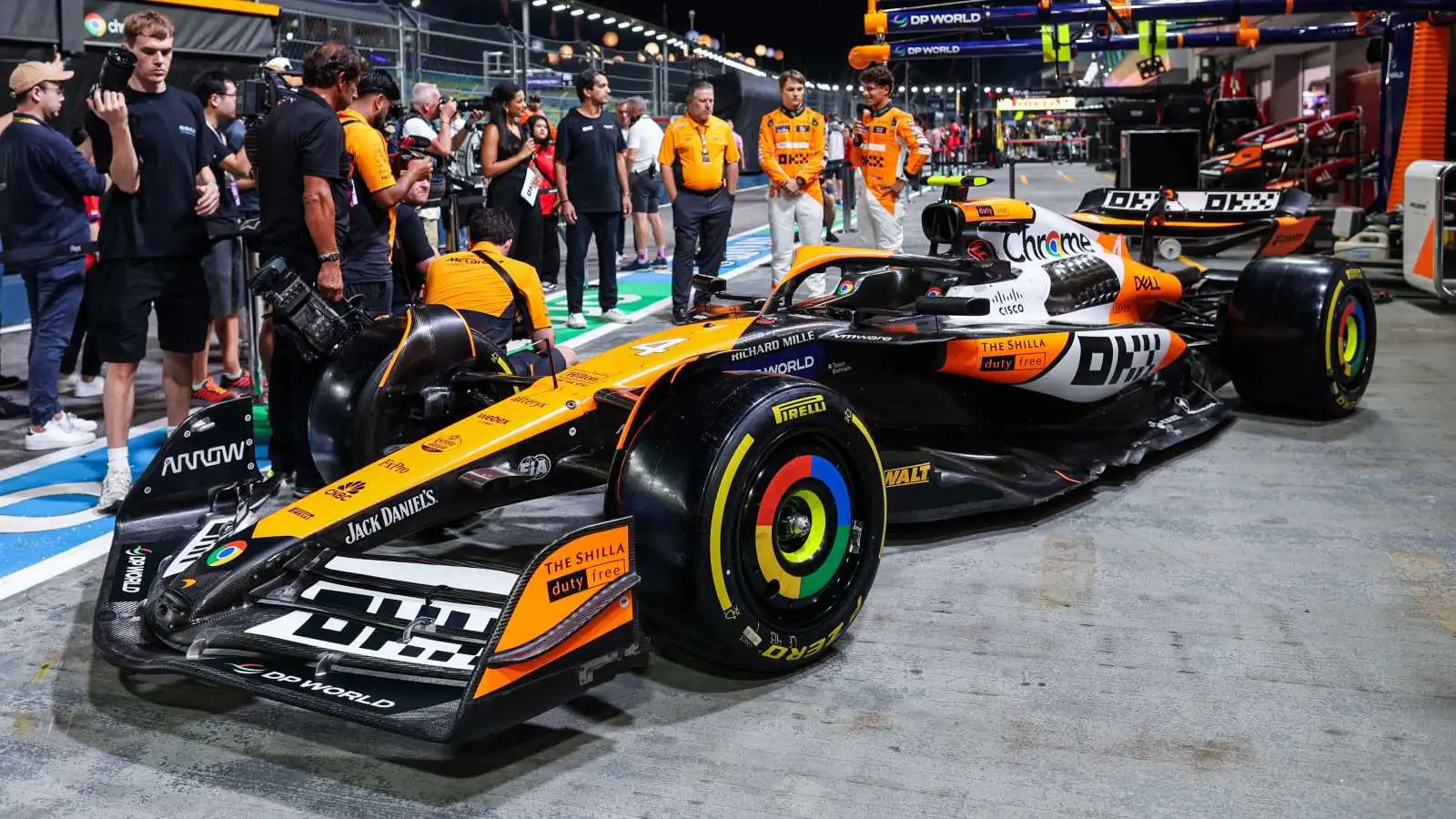
The final race before another long break, Singapore is a circuit many drivers consider the most challenging on the calendar.
This night race pushes both drivers and cars to their limits, with some changes for this year’s event adding to the already high level of technical precision required. Let’s take a moment to revisit the characteristics of this circuit, who it might favour, and what we can expect over the weekend.
The Marina Bay Circuit
The Marina Bay Street Circuit has been part of the Formula 1 calendar since 2008, when it hosted the championship’s first-ever night race. The track is 4.940 km long, and on Sunday, we’ll see 61 laps.
Singapore is one of the most physically demanding circuits for drivers, with 19 corners and constant racing close to the barriers. Drivers need to stay fully focused at all times. The city’s high humidity and scorching temperatures make the challenge even harder – it’s common for drivers to lose up to 3 kg of fluids during the race. Races in Singapore are also typically longer due to the frequent appearance of safety cars.
When it comes to aerodynamic packages, downforce here is more critical than drag due to the higher number of slow and medium-speed corners. For this year’s race, the FIA has added an extra DRS zone on the straight between turns 14 and 16. This change will likely push teams to use even more aggressive aerodynamic setups. Maximum speed isn’t as vital since the straights are relatively short.
Precise braking will also be crucial here, given the number of corners. Engineers will need to account for the high temperatures and we’re almost certain to see larger cooling vents for both the engines and brakes.
As is often the case with street circuits, Pirelli has selected the softest tyre compounds – C3 for hard, C4 for medium, and C5 for soft. Traction coming out of slow corners will be vital, making the softer tyres a wise choice. Engineers will be hunting for every bit of extra grip, whether through aerodynamic load or mechanical grip, making the car’s balance setup more crucial than usual.
The track has been resurfaced, and with a few small layout changes this year, the free practice sessions will be essential for teams to gather as much valuable data as possible.
Last year, most teams opted for a one-stop strategy, using hard and medium tyres. The main reason was the lengthy pit stop time, with a speed limit reduced to 60 km/h, resulting in an average time loss of 28 seconds per stop. Engineers will also keep a close eye on potential safety cars, which can complicate strategy decisions.
F1 2024 head-to-heads going into Singapore GP
👉 F1 2024: Head-to-head race statistics between team-mates
👉 F1 2024: Head-to-head qualifying record between team-mates
Singapore GP aerodynamic packages revealed
Teams have gone with high and medium-high downforce aerodynamic packages, prioritising stability in the slow corners.
Configuración de alas traseras en Singapore
Rear wing configurations in Singapore#f1 #SingaporeGP pic.twitter.com/k9ph5xh8cu
— Albert Fabrega (@AlbertFabrega) September 19, 2024
Most designs are quite similar across teams, with McLaren being a notable exception. The addition of the extra DRS zone likely influenced the engineers’ decision to keep the rear wing’s main plane less loaded. This should provide them with enough downforce when DRS is closed and solid top speeds on the straights when it’s open. In other words, we can expect greater DRS efficiency from McLaren, though perhaps not the highest top speeds compared to other teams.
Who will excel at Marina Bay?
As mentioned, this track presents significant challenges for engineers when it comes to finding the perfect setup. Interestingly, Singapore was the only track last year where a Red Bull driver didn’t claim victory. It was the one place that managed to unsettle the RB19, making it look a little less like the most dominant car in F1 history.
Much of this is down to the track’s irregularities. Red Bull’s car relies heavily on its suspension being perfectly in tune with its aerodynamic floor.
The team is still searching for solutions to their struggles, and Singapore, with its challenging characteristics, doesn’t seem like the best place for them to find it. In fact, we wouldn’t be surprised if Sunday’s race turns out to be one of their worst performances in recent years.
On the flip side, McLaren’s MCL38 is expected to shine on this type of circuit, making them strong contenders for victory.
Ferrari is also coming into form, with their car performing exceptionally well on the softest Pirelli tyres, as we saw in Monza. We’re likely to witness another thrilling battle between these two teams for the top step on the podium.
Read next: McLaren ‘mini-DRS’ legality verdict given with ‘grey area’ denial issued
